Food supply chains are under more scrutiny than ever in the era of coronavirus and Brexit. The vertical farming movement offers solutions to some of the biggest challenges facing agriculture today
This feature is the first in a two-part series on the future of farming
Michiel Peters has been fielding some frantic calls in recent weeks. “People are saying, ‘You have to come now! We’re sorry we didn’t call you a year earlier!’” the CEO of vertical farming company PlantLab reports.
It seems vertical farming has reached a tipping point. For a long time, any consideration of the method soon ended with unit economics. But the price of produce has been rapidly falling – to the point that it’s now beginning to compete with traditional farms. And the unique advantages of vertical farming are suddenly coming into sharp relief for manufacturers, suppliers and retailers. So much so that the sector is preparing for a huge boom in interest and investment.
Indeed, demand is so heightened that Peters and his peers are having to turn potential customers away. Could now be vertical farming’s big moment?
“It’s not really a question of ‘if’ any more. It’s going to happen,” Peters says. “And it’s already happening. It’s a matter of scaling up now.”
The benefits lie in the vertical farming method. Produce is grown indoors under LED lights, with a plant’s roots typically suspended in nutrient-rich water or mist. Temperature, humidity and light is carefully regulated within the sealed environment, and more plants can be packed into a space, on racks that can be seven storeys high.
While yield per square metre, low water consumption and lack of soil or pesticides have long been touted as the method’s main selling points, another one is becoming increasingly important: a guaranteed, year-round supply situated right where it is needed.
“On a small island or in remote locations, vertical farms can have a tremendous impact on food supply, especially in Covid times,” says Peters. “The food chain is typically very long and sensitive. When things break down, people realise their security of supply is not always a given.”
“It’s not really a question of ‘if’ any more. It’s going to happen. It’s a matter of scaling up now”
That’s not to say vertical farming businesses have been immune from the effects of the pandemic. The construction of Amsterdam-based PlantLab’s second overseas site in the Bahamas is being thwarted by current travel restrictions, for example. But Covid, and the disruption it has wreaked on global supply chains, is ultimately helping the sector make its case.
“There’s huge interest from island economies, hot economies and countries that have a higher propensity to import and have less arable land,” says Jamie Burrows, CEO of London-based Vertical Future. “From Iceland to Singapore, they all have very similar requirements.”
Plus, the pandemic isn’t the only threat to imports, Burrows adds. “If you import a lot of food, climate change is going to impact the countries that are producing that food for you. Even now, there have been pretty significant inflections in price on shelves and availability because of small fluctuations in temperature during the key growing seasons,” he explains.
And there is yet another factor that is throwing vertical farming into the spotlight in the UK, specifically: Brexit. That’s not just down to the immediate effect of imports disruption. The local produce sector remains riddled with uncertainty over access to the many seasonal workers that used to come from the EU, with a potential labour crisis looming.
Indoor farms, which are typically highly automated, require far fewer people to run. Furthermore, with constant harvesting, a small and constant rather than large and seasonal workforce is needed.
The yield and potential of vertical farming
The market opportunity for vertical farms is huge. Barclays Research analysts estimate the size of the global fruit & vegetable market is roughly $1.2tn (£800bn), and calculate that the addressable produce market for vertical farms is closer to $700bn (£513bn), leading to an approximately $50bn (£36.7bn) market opportunity. Plus, vertical farming boasts some environmental benefits, as produce requires less water and space to grow
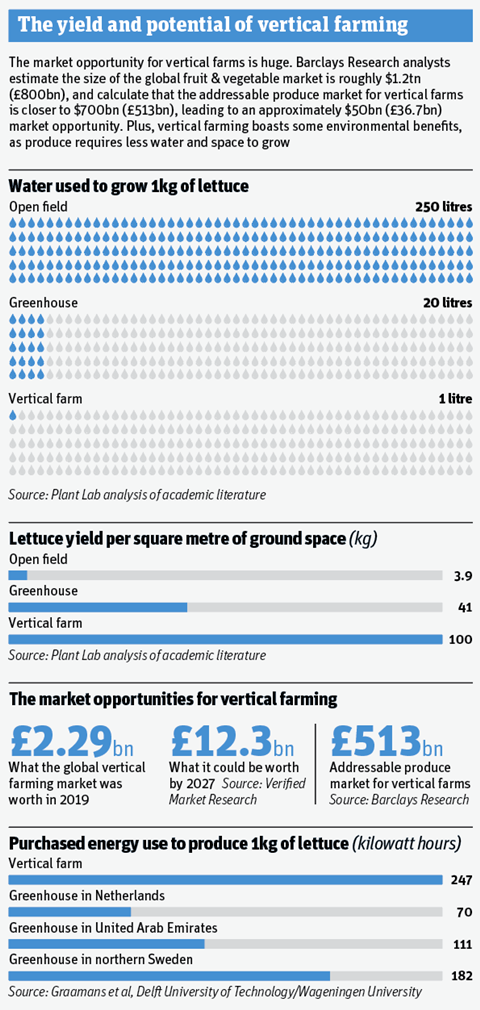
Jones Food Company’s Scunthorpe vertical farm is a prime example. It has 26 tennis courts of growing space, operating 365 days a year – with a staff of six.
“Imagine if you have next to no labour in a farm that big. One of your largest costs is one you can really attack,” says James Lloyd-Jones, JFC CEO and founder.
As a bonus, businesses such as JFC can boast lower carbon emissions than outdoor farms. While energy-intensive – to make up for the lack of natural sunlight – sector argues overall carbon savings are made when indoor farms are positioned close to where produce is needed, drastically reducing food miles.
Furthermore, Peters says, “if you make the chain radically short, you don’t need to waste so much of the harvest. You can avoid it altogether.”
This element could be particularly important to retailers with ambitious carbon commitments. “Retailers are being asked more questions than they’d probably like about carbon. You can’t just fudge it any more,” says Lloyd-Jones.
It’s not all plain sailing, though. There are some major hurdles for the sector to overcome – chiefly, the huge capex needed to build an indoor farm. Because of this, many vertical farming companies, whose main interest is in providing the technology for the farms to function, are becoming farm operators and even consumer brands.
PlantLab launched its first US production site – or ‘Plant Paradise’ – in December, within a former battery factory near Indianapolis city centre.
Having spent some time “working in relative silence” on the technology, PlantLab is now a site developer and operator. Local partners distribute and brand the end product into local supermarkets. As patent holder for its indoor farming tech in 74 countries, it is also in talks with major players about licensing the IP. But, adds Peters: “We’ve started this company to change the world, not just sit behind a desk and talk about licenses.”
It helps that PlantLab can point to the success of its own farms. Because building farms yourself is necessary to prove the technology and economics, says Lloyd-Jones. “There’s a lot of vertical farming companies that are tech companies, but they don’t grow anything so the person buying is the guinea pig,” he says.
For his part, he’s looking to refine the JFC concept further before embarking on a licensing model. The company already has plenty of expertise. Ocado-backed JFC is Europe’s largest vertical high-care farming operation, its 5,000 sq m facility stacking up 12 metres high with more than 17 layers of produce. But it will go one step further with its two new sites in the Midlands and the south west, due to open by the end of this year.
They will be more technologically advanced – “it’s like we built the first iPhone in Scunthorpe. We’ve jumped to making the iPhone 8,” Lloyd-Jones says – and will provide enough produce to meet 25% of UK demand for herbs.
The end goal is to develop a “cookie cutter” vertical farm that can be quickly and cheaply built wherever needed. “Once we’re happy with that we’ll look at a licensing model where we build these facilities all round the world. But anyone building them will know they’ve been stressed, used and run at 100%,” he says.
The model for vertical farming firms then is likely to be akin to Ocado and Ocado Retail, where the latter proves the case for the former’s technology, which rivals then adopt.
So similar, in fact, that Ocado itself is looking to get involved. In February last year, it formed Infinite Acres – a joint venture with Netherlands-based automation tech provider Priva Holding BV and US-based 80 Acres Farms, a vertical farm operator and brand. Customers have two options. They can either partner with Infinite Acres to build their own farm, or they can have 80 Acres run a farm on their behalf using that same technology.
If companies get it right, the licensing model can be lucrative. See Vertical Future for proof. It has two farms in London, with three more being built, but the output of the farms is only a small part of the business. “We retain them to keep our finger on the pulse and customer trends and it validates what we’re doing,” says Burrows. “Ninety-five per cent or more of our revenue now is from technology sales and software.”
Funding flurry
That potential has prompted a flurry of investment in the sector, kicked off in 2017 by Japanese media giant SoftBank, Alphabet’s Eric Schmidt and outgoing Amazon boss Jeff Bezos’ funding of San Francisco vertical farming startup Plenty. Plenty has now raised more than $500m in venture funding.
With it has come a lot of hype. “There is a lot of hot air in vertical farming,” Burrows says. “People can make crazy claims – one company said it could grow a head of lettuce in five days, which is ridiculous. And there is a lot of smoke and mirrors and low-grade companies trying to jump on the bandwagon.
“The risk is farms will fail and make the sector look bad,” he adds. “The impact for the good companies is investors will look at the sector and say it seems risky.”
Nevertheless, the pile-on is ultimately a positive thing, says Peters. “It’s maybe a matter of culture. In the US things tend to be more hyped and people tend to promise the world – then figure out after they have the money, they still need to do all the R&D,” he explains. “But it all helps to underline it’s really happening, and makes it acceptable and credible to consumers.”
Just how big vertical farming can get remains to be seen. Barclays estimates a $50bn (£36.7bn) market opportunity. As a total share of fresh produce output, it’s “going to be a single digit for years” says Burrows. “But as a standalone sector the growth rates are very high and will continue to be.”
Indeed, although it is currently focused on a small range of herbs and leafy greens, ultimately “you can grow anything” says Lloyd-Jones. While staples like rice and wheat might not be viable now, that will soon change. Competitive prices will doubtless be added to vertical farming’s multitude of advantages.
“We don’t want to get stuck in just being a premium, niche product that will only be affordable by a small part of the market,” says Peters. “We want to change the world.” Suddenly, that aim seems within reach.
Five firms leading the global vertical farming movement
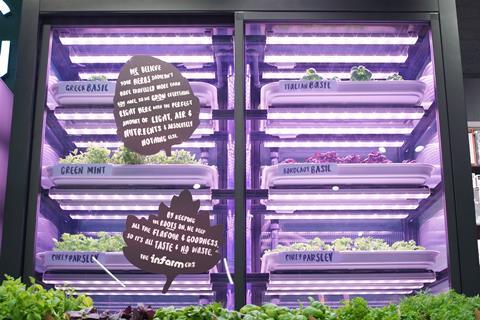
InFarm
Vertical farms don’t have to be on a grand scale. In fact, they can fit in a chiller cabinet. InFarm places production right in the supermarket aisles at clients including Whole Foods Market and M&S.
“Modern agricultural production is built on a supply chain that is vulnerable to ecological and supply shocks. The global pandemic highlighted this. Retailers are having difficulties importing fresh produce, highlighting the need to develop a local and sustainable supply chain,” says Daniel Kats, VP of corporate sales.
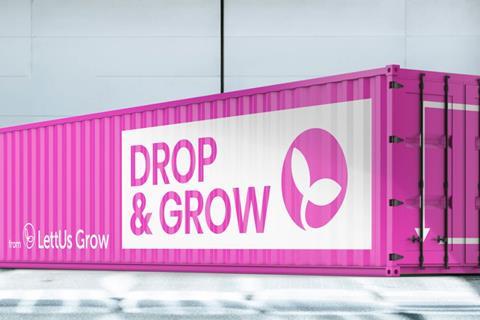
LettUs Grow
Bristol start-up LettUs Grow specialises in aeroponic farms that fit within a shipping container. Customers can purchase the full “business in a box”, which includes the grow beds and control system.
“Unlike a traditional farm, you’re not limited by location or climate. Your container farm needs no fertile land to operate and with its advanced climate control system, every day is a perfect summer’s day with ideal growing conditions,” LettUs Grow says. The company has raised a total £3.4m.
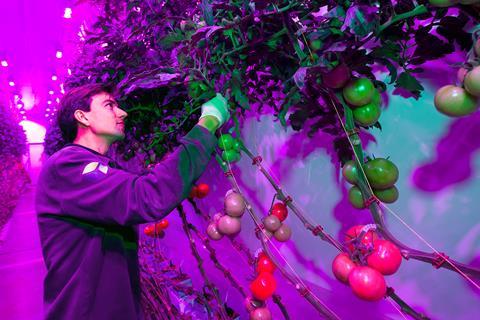
PlantLab
This Dutch indoor farming firm launched its Indianapolis site in December. The 54,000 sq ft farm, developed in partnership with the Englewood Community Development Corporation, will provide an annual supply of close to 45,000 kg of fresh herbs and lettuce to local supermarkets and foodservice companies.
The fresh tomatoes, cucumbers, lettuce, and herbs grown in the ‘Plant Paradise’ are being marketed under the brand name Uplift, with the tagline ‘good food on purpose’.
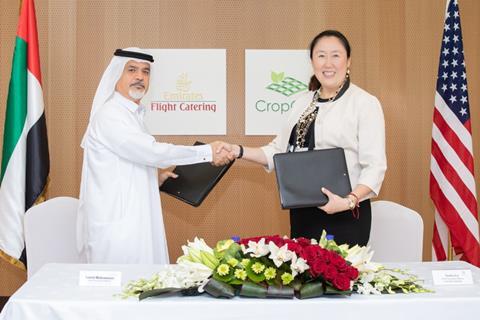
CropOne
The world’s largest vertical farm is being built in Dubai, a joint venture between US firm Crop One and Emirates Flight Catering.
The $40m, 130,000 sq ft controlled environment facility will produce 6,000 pounds of high-quality, herbicide and pesticide-free leafy greens, harvested daily.
“We secure our own supply chain of high-quality and locally-sourced fresh vegetables, while significantly reducing our environmental footprint,” said Saeed Mohammed, EFC CEO.

AeroFarms
US firm AeroFarms last year announced it was building a 90,000 sq ft vertical farm in Abu Dhabi, which will be the world’s largest indoor agriculture research centre. The facility will house research centres for plant reproduction, seed breeding, machine learning and vision as well as robotics.
The company has grown more than 800 varieties of crops and is eyeing opportunity beyond food production in other industries like pharmaceutical, cosmeceutical and nutraceutical.




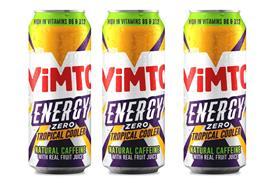


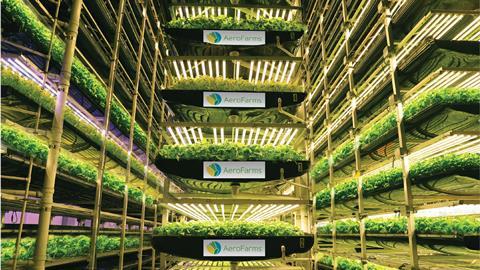
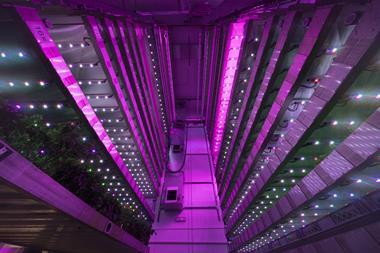
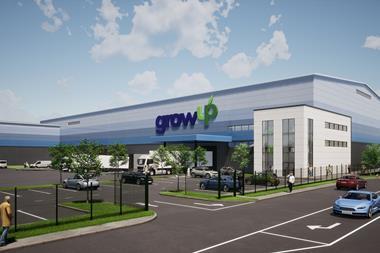
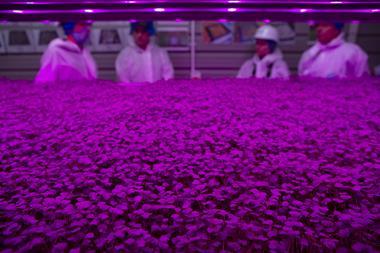

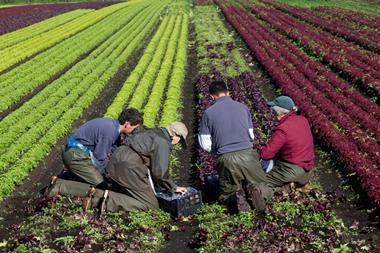
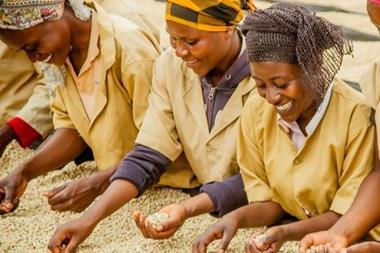
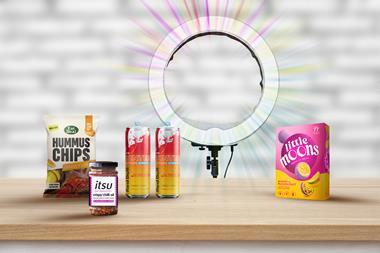





No comments yet